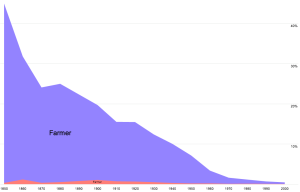In April 2003, researchers completed their analysis of the human genome project. They confirmed that all human beings were 99.9% genetically identical. While science has proven we are nearly the same, why do we continue to judge people based on our perceived differences? Race, religion, politics, meat eaters vs. non-meat eaters—the list is endless. Our life experiences shape us more than the innate sensibilities with which we are born. History also documents the injustices we have bestowed upon each other as a result of deep resentments that have accumulated between groups of people. So while our bodies are the same, our brains—our minds and perceptions—divide us from one another. Ironically, our brains are also the difference between us and the animals who act on instinct alone.






